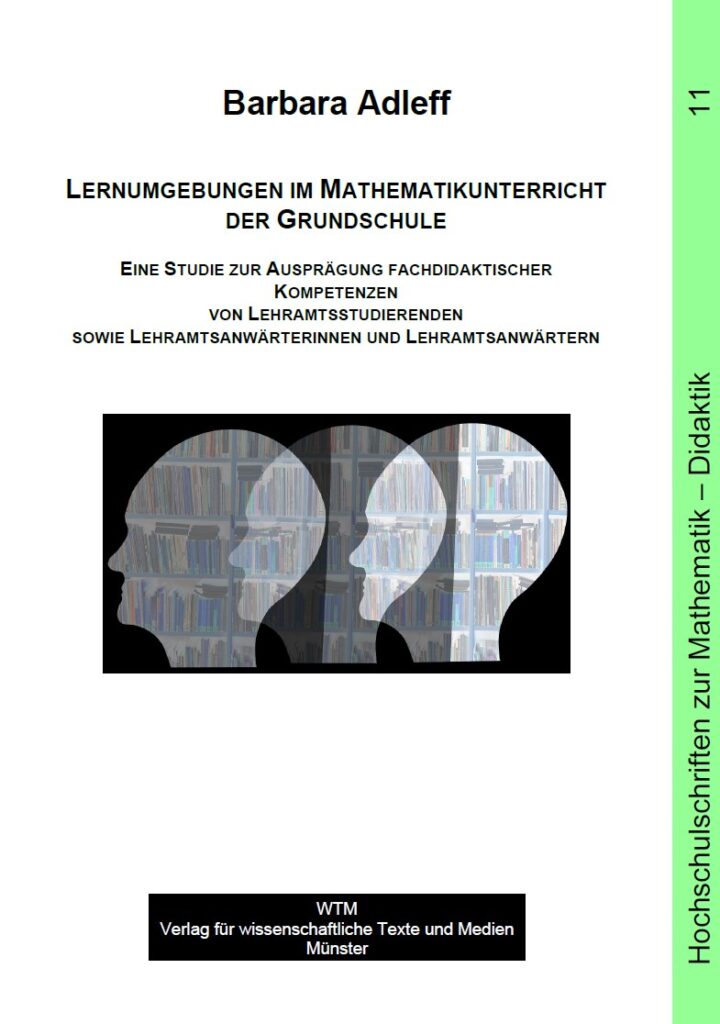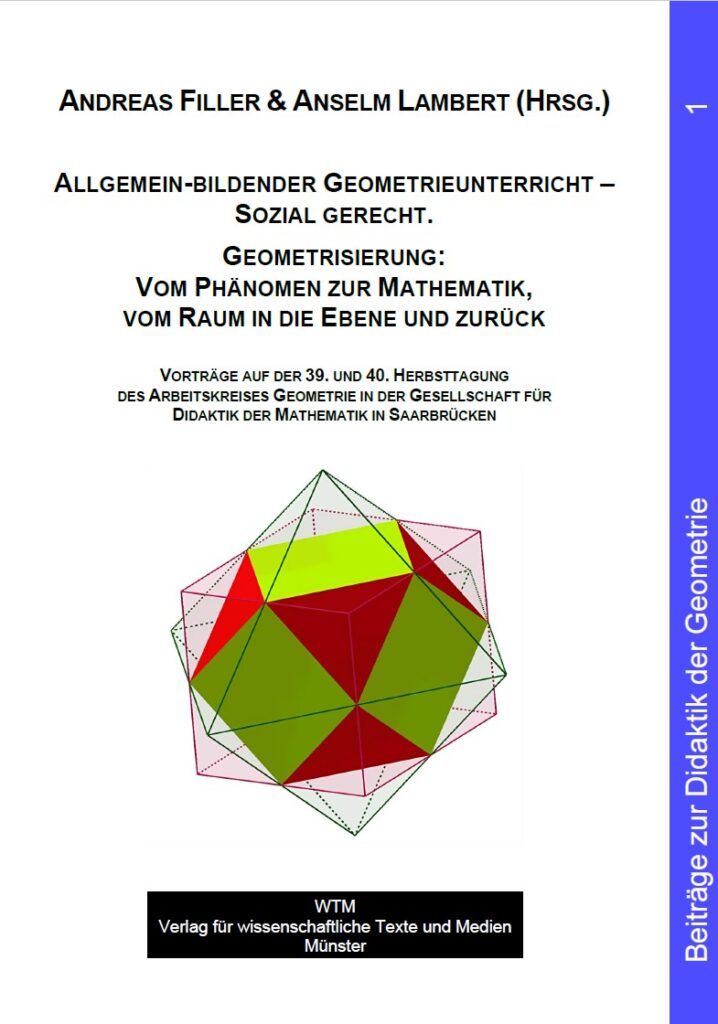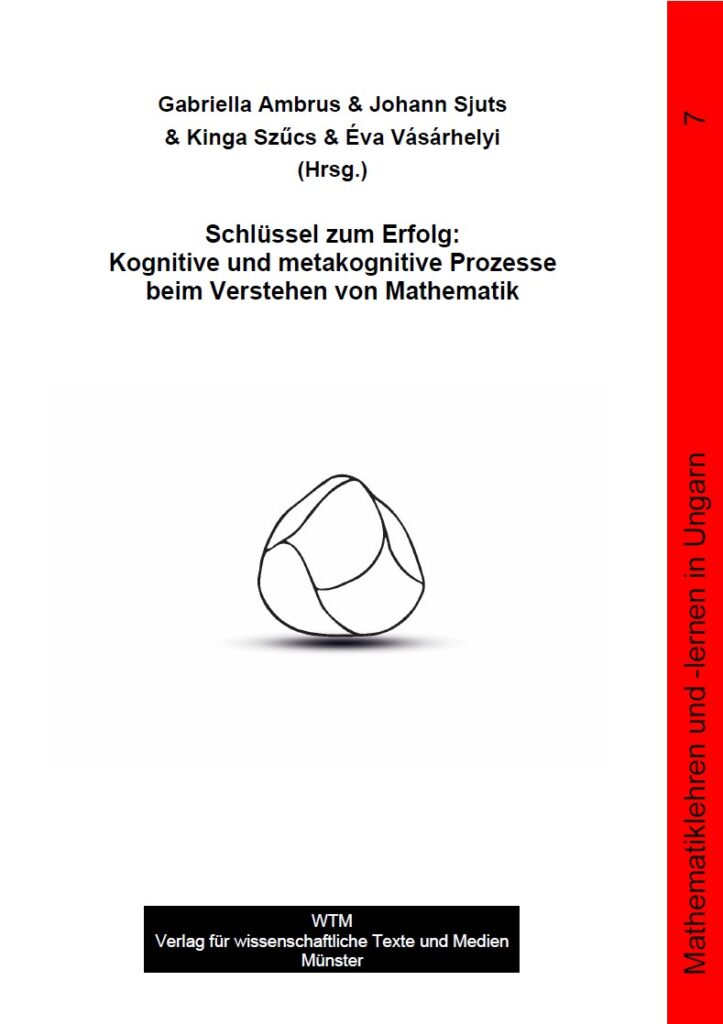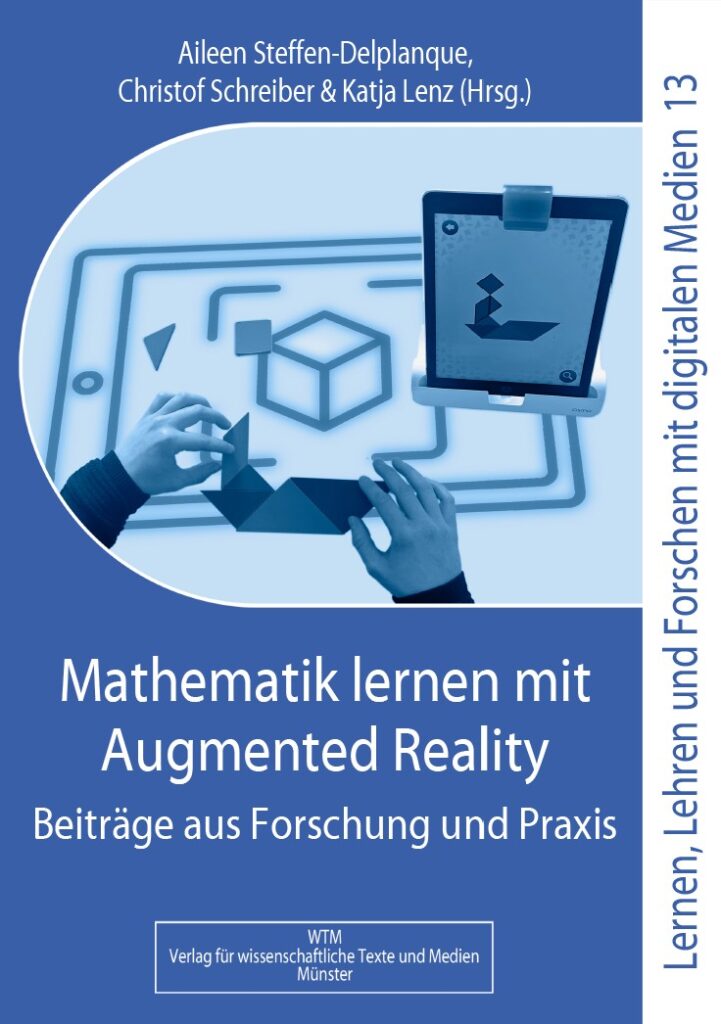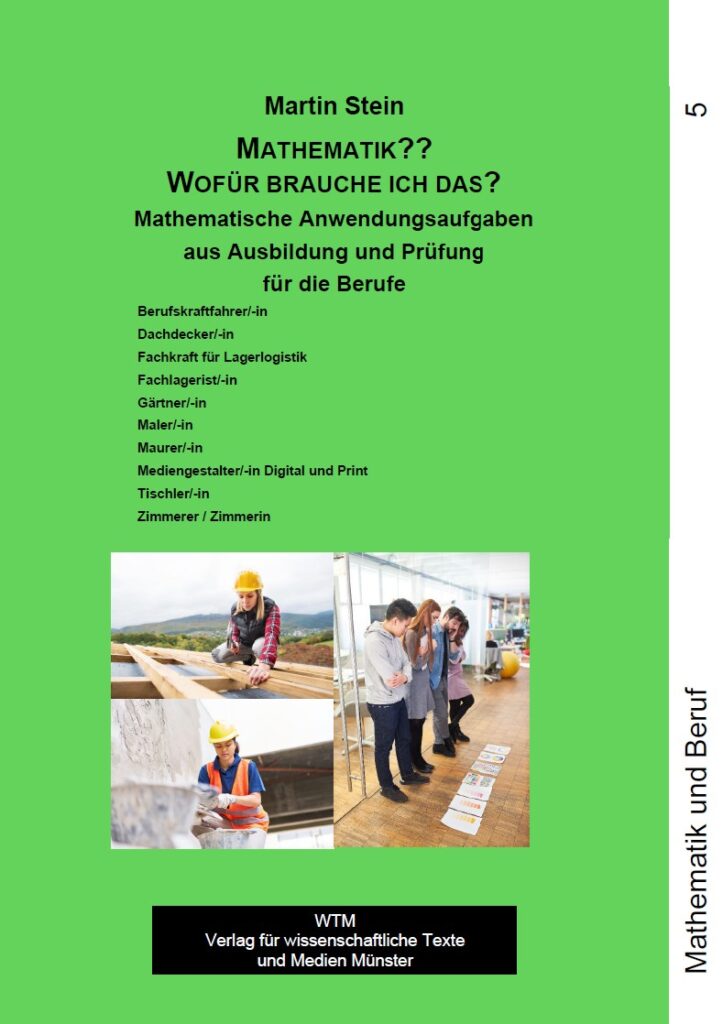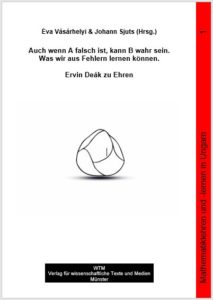Münster 2019, ca. 315 S.
Print: ISBN 978-3-95987-113-6, 37,90 €
Ebook: ISBN 978-3-95987-114-3, 34,90 €
https://doi.org/10.37626/GA9783959871143.0
Für Bestellungen bei edition-buchshop hier klicken
Auch wenn A falsch ist, kann B wahr sein. – Diese aussagenlogische Feststellung soll als Leitsatz für das vorliegende Buch nicht in wörtlicher, sondern in metaphorischer Bedeutung den Erkenntnisgang der Mathematik zum Ausdruck bringen – und zwar in doppelter Weise. Auf dem Weg zu gesicherten Erkenntnissen sind Irrtümer und Fehler, Lücken und Unvollkommenheiten seit je Bestandteil der Entwicklung der Wissenschaft Mathematik gewesen. Und ebenso gilt das für die Entwicklung eines Mathematik lernenden Individuums.
Immer wieder gaben also Falsches und Fehlerhaftes den Anstoß für Verbesserungen und Korrekturen. Aus Fehlern lernen – das ist durchaus wesenhaft für die Entwicklungsgeschichte der Mathematik, aber eben auch für den Aufbau mathematischen Wissens und Könnens eines Menschen. Ziel ist es in beiden Fällen, unverbrüchliche Gewissheit und einwandfreie Sicherheit zu erlangen.
Das Buch möchte das Werk und das Wirken von Ervin Deák würdigen. Eine seiner mathematikdidaktischen Bestrebungen lässt sich in folgender Weise kennzeichnen: Indem man Unzulänglichkeiten in der Ideengeschichte der Mathematik herausarbeitet und für die Schulmathematik konzeptionell aufbereitet, gelingt es, zentrale Ideen zu verdeutlichen und begriffliche Klarheit zu schaffen. Insbesondere sollte das auf jene altüberlieferten problembehafteten Unzulänglichkeiten bezogen werden, die im heutigen Unterricht ‒ tief verwurzelt und meistens unterschwellig – fortleben. Kern der Konzeptionen ist die konsequente Durchsetzung einiger besonders gehaltvoller Grundgedanken, die der Schulmathematik ein charakteristisches Gepräge geben können.
Mathematik ist in Ungarn traditionell von hoher kultureller und wissenschaftlicher Bedeutung. Intention der Buchreihe „Mathematiklehren und -lernen in Ungarn“ ist es, die beispielgebende Rolle des Landes und den inspirativen Austausch über Grenzen hinweg zum Ausdruck zu bringen.
Ambrus, Gabriella: Welche Aufgabenstellungen formulieren SchülerInnen und StudentInnen auf der Basis von Texten über reale Situationen? pp 23 – 38
Faced with real situations, pupils and students find questions of non-mathematical or mathematical character. What depends on the type and number of questions? What significance do previous experiences have? The article reports on studies in mathematics education and in teacher training.
Classification: B50, C30, D50.
Keywords: mathematics education, realistic mathematics, self-created questions, problem solving in context.
https://doi.org/10.37626/GA9783959871143.0.01
Borovcnik, Manfred: Die zentrale Rolle von Aufgaben als Träger der Vermittlungsprozesse in der Ausbildung in Stochastik. pp 39 – 60
The present paper deals with tasks in the teaching of stochastics. Yet, mathematics education as a whole entity is at stake. Tasks serve a goal: namely, to understand the concepts better so that one may work on similar and more different tasks to come to reasonable results. We also include logic, which seems clear as mathematics is based on logic. Then we elaborate on the value of tasks in mathematics and in stochastics teaching. The historic emergence of concepts and the individual cognitive growth of concepts provide a rich source for tasks. Further points of our analysis are how to characterise stochastics tasks and how to develop task systems that may serve the goal of learning stochastics well. Finally, we discuss some tasks we use in our teaching and provide background knowledge about the intention connected with them. We illustrate our perception of stochastics and how we try to support our students to stabilise their own conceptions by the details of a solution to one task, which we hand out to our students. Some conclusions about the value of tasks are drawn at the end.
Classification: D80, K10, M10, U40.
Keywords: Stochastic teaching, elementarisation, tasks, mathematical modelling, student feedback, problem-oriented lessons, best practice solutions, context-based concept acquisition.
https://doi.org/10.37626/GA9783959871143.0.02
Csörgö, Katalin; Hegyvári, Norbert: Elementary problems with linear algebraic background. pp 61 – 70
We discuss problems for students age between 14 and 18, solving in an elementary way, and by using higher mathematical tools. We also made a research asking university students to solve the problems. The aim of the research was, to see how students treat these elementary problems by using linear algebraic background.
Classification: B40, H20, E50, F30.
Keywords: proof methods, manipulation of expressions, linear algebra.
https://doi.org/10.37626/GA9783959871143.0.03
Deák, Ervin: Unendliche Reihen im Mathematikunterricht. pp 71 – 104
A radically new propaedeutic way of cognition to infinite series. Convergence is not a starting point but the result of a longer and detailed notional construction. In the beginning a series and its „sum” is considered as a symbolic alternative formula for an elementary problem of a certain type and its known solution respectively.
Classification: B10, B15, B19; C30, C35, C39; I30, I35, I39.
Keywords: Infinite series, propaedeutics to infinite series, Convergence, pursuit processes, psychological-genetic method.
https://doi.org/10.37626/GA9783959871143.0.04
Fried, Katalin: The development of concepts through thousands of years. pp 105 – 112
There are several difficulties when teaching concepts; we have to consider its content, its abstract meaning, its visual representation, verbal and nonverbal aspects of it, etc. Also, the individual content of a concept changes with the knowledge of someone. However, the content of the concepts through the ages vary but education does not necessarily follow the changes. Not talking of the everyday meaning of a concept, this can get stuck at a certain level, while the scientific content changes. The concepts we teach in schools are not necessarily the actual ones. Thus, it is necessary to revise how we teach some of the concepts. One of the most important concepts of this kind is the prime number.
Classification: D30, D39, C30, C39.
Keywords: Prime number, concept development, goals of mathematics education, cognitive processes.
https://doi.org/10.37626/GA9783959871143.0.05
Fried, Katalin; Török, Judit; Vásárhelyi, Éva: From the concrete activity to the exact mathematics. pp 113 – 136
In this paper, we are dealing with problems that have been discussed with prospective mathematics teachers to make them discover methodological opportunities and pitfalls at different levels of problem solving. We have chosen topics which are in themselves interesting for children, because they can be introduced playfully with concrete activity, they require little mathematical knowledge at the start, and their conscious discussion is also important for mathematical activities and applications of mathematics. We will show in Chapter 2 how the games lead to the Fibonacci series and the Pascal triangle, and in Chapter 3, how to get from paper folding to dragon curves.
Classification: A30, D50.
Keywords: manipulative materials and their use in problem solving (visualizations, models, educational games, paper folding), Fibonacci sequence, Pascal triangle, dragon curve.
https://doi.org/10.37626/GA9783959871143.0.06
Gosztonyi, Katalin: History of mathematics, mathematical histories, storytelling in Hungarian mathematics education. pp 137 – 148
History of mathematics is rarely used in Hungarian mathematics education, and even more rarely goes beyond anecdotic mentions of history. In this paper I will argue that despite of this phenomenon, a historical perspective on mathematics, in a more general way, plays a crucial role in a specific Hungarian tradition of mathematics education, called felfedeztető matematikaoktatás (“teaching mathematics by guided discovery”). I will revisit the epistemological background of this approach, analyse the role of history in this view on the nature of mathematics and its teaching, and illustrate the analysis by some examples from written sources and nowadays teaching practice.
Classification: A30, D20, D40.
Keywords: History of mathematics, history in mathematics education, guided discovery in mathematics education.
https://doi.org/10.37626/GA9783959871143.0.07
Götz, Stefan: Bereichsspezifische Strategien im Stochastiksunterricht. pp 149 – 168
For multi-stage random experiments, probability trees are used for their description. Using the path rules, probabilities for the results of such multi-level experiments can be calculated from the probabilities that characterize the transitions from one step to the next. A natural next step is to look for sequences of random experiments, which can be represented by directed graphs. Analogous to the path rules, mean value rules serve to determine probabilities for an end of these random processes and their expected durations. Directed graphs and mean rules represent domain-specific strategies that take up and develop concepts of stochastic teaching at secondary level.
Classification: D54, K64, N74, D29.
Keywords: stochastics education, stochastically thinking, domain-specific strategy, MARKOV chains, directed graph, absorption probability, mean hitting time, transition probabilities, “Mittelwertsregeln”.
https://doi.org/10.37626/GA9783959871143.0.08
Guncaga, Ján; Budai, László; Kenderessy, Tibor: GeoGebra as a tool for visualisation in geometry education. pp 169 – 176
There are problems in geometry education in lower and upper secondary school, which students have with the spatial imagination and with the understanding of some geometric concepts. In this article, we want to present tasks that show some advantages of the software GeoGebra. We use this software as a tool to visualize and to explain some geometric concepts, as well as to support students’ spatial imagination.
Classification: D30, G10.
Keywords: space imagination, GeoGebra, mathematics education at lower and upper secondary level.
https://doi.org/10.37626/GA9783959871143.0.09
Kántor, Tünde: The Role of Rythm in the History of Mathematics and in the Learning of Mathematics. pp 177 – 190
We present a rhythm in the history of mathematics and in the learning of mathematics on the base of Bruner’s research work on the cognitive development of children. At first we present this rhythm on the base of his three modes of representation (enactive, iconic and symbolic representation) with the help of Table XLV. from Tobias Mayer’s Mathematischer Atlas (1745). We analyze his method in discussing figurate and space numbers. Then we give some other mathematical problems for Secondary Schools of the present-days, such as: problems of competitions and mathematical circles, Mason’s problem, problems from the KöMal (Mathematical and Physical Journal for Secondary Schools) connected with figurate and space numbers.
Classification: A30, D50.
Keywords: Bruner’s representation theory, Tobias Mayer’s Mathematischer Atlas, figurate and space numbers.
https://doi.org/10.37626/GA9783959871143.0.10
Möller, Anne; Rott, Benjamin: Die Mittelsenkrechte – stoffdidaktische Analyse und Bezüge zum Unterricht. pp 191 – 206
The concept of the perpendicular bisector is analysed with a didactical view and different opportunities of definitions are discussed. After that we focus on the implementation in the classroom. Therefore, we look at the definition used in schoolbook but also the previous knowledge of children around the perpendicular bisector. Finally, written explanations of seventh-graders show how they argue with the concept of the perpendicular bisector.
Classification: D70, E50, U20.
Keywords: geometry, perpendicular bisector, mathematics education.
https://doi.org/10.37626/GA9783959871143.0.11
Pintér, Marianna: The long way a concept category develops. pp 207 – 214
By the age of 6 every child has all the characteristics and capabilities what an individual dealing with Mathematics basically needs. The following are still missing when starting school: conscious way of gaining experience, knowledge acquired and processed the proper way. In this article I would like to show a possible sample of this proper, long way.
Classification: C30, C70, D40, E60, U30.
Keywords: Mathematics, mathematical thinking , long way, proper educational work, before the preschool age, Preschool age, Junior primary school, Secondary school, to gain experience and to build concepts based on actions and acts.
https://doi.org/10.37626/GA9783959871143.0.12
Schweiger, Fritz: Doppelte Diskontinuität, Fundamentale Ideen und Expository Style Teaching. pp 215 – 226
Felix Klein coined the concept of double discontinuity. He rightly observed that students faced two major changes when they started to study mathematics at the university and when they returned as teachers to school feeling that university mathematics was not so useful. Recently a new book on this topic appeared (Ableitinger, Kramer und Prediger 2013). The didactical concepts of Fundamental Ideas (Schweiger 2010) and Expository Style Teaching (Schweiger 2016) could be a helpful addition to this problem.
Classification: B50, D20, D40 .
Keywords: Doppelte Diskontinuität, Fundamentale Ideen, Expository Style Teaching.
https://doi.org/10.37626/GA9783959871143.0.13
Sjuts, Johann: Fehlerhaftes und Falsches beim mathematischen Denken – Melioration durch Metakognition. pp 227 – 242
Faulty and false understanding in mathematical thinking are visible signs of learning. Their appearance and their overcoming are integral parts of the associated processes. It is therefore important to identify and correct the faulty and wrong elements. A revision results in an improvement, a melioration. Tasks that involve a risk of error or falsity trigger metacognitive activity. This leads to corrections and improvements. Thus, a melioration by metacognition occurs.
Classification: C32, C33, C70, D60, D72, D73.
Keywords: mathematics education, mathematical thinking, metacognition, melioration.
https://doi.org/10.37626/GA9783959871143.0.14
Somfai, Zsuzsa; Szöllösy, András S.: Why are they mistaken? pp 243 – 252
In this study we are trying to illustrate with three examples that students’ typical mistakes in solving mathematical problems are very much worth analysing, because their explanation often unfold that they are not caused by an insufficient knowledge of mathematics, but before or after solving the mathematical problem at different phases of translation of the problem from everyday language to mathematical notation, and then translation of the solution back to everyday language. If the mathematical formulation of a problem presented in a natural language is sensible at all, whether it is a correct mathematical representation of the problem or not; it represents an interpretation of the problem as exposed in the everyday language text. We are examining students’ misinterpretations trying to find reasonable explanations to them and draw methodological conclusions to overcome them.
Classification: C30, D70.
Keywords: error-analysis; everyday vs. mathematical language; textcomprehension; mathematical representation; problem-solving.
https://doi.org/10.37626/GA9783959871143.0.15
Svitek, Szilárd: Der Reiseleiter für Mathematikdidaktik Ervin Deák und das Nichts, das zählt. pp 253 – 258
In the mathematical history course of the mathematical didactic PhD training at the Eötvös Loránd University in Budapest the lecturer Ervin Deák works as a tour guide. A special topic is the development of the number zero, its importance in mathematics and mathematics education.
Classification: A30, B50, F30.
Keywords: mathematics education, history of mathematics, development of the number zero.
https://doi.org/10.37626/GA9783959871143.0.16
Ullrich, Peter: „Niemand kann erklären, was eine Funktion ist“. pp 259 – 268
Starting from the quote from Hermann Weyl given in the title a ramble is undertaken through the development of the notion of function with special emphasis on the question whether the values are associated following a law. On the one hand, this shows a success story of the interplay of this notion and of infinitesimal calculus. On the other hand, one finds impressive examples of overgeneralizations.
Classification: C30, D70, E40, I20, I30, M10.
Keywords: notion of function, functional laws, overgeneralization.
https://doi.org/10.37626/GA9783959871143.0.17
Vancsó, Ödön: Der Fehler als ein strategisches Werkzeug im mathematischen Erkenntinsprozess. pp 269 – 286
The dealing with mistakes and errors has a great significance in the mathematical learning process. This is especially true for paradoxes. The article demonstrates the occurrence of wrong conclusions on examples from mathematics lessons in statistics and probability theory.
Classification: D70, K50, K70.
Keywords: stochastics education, paradoxes in statistics, mistakes, errors, mathematical learning process.
https://doi.org/10.37626/GA9783959871143.0.18
Vargyas, Emese: Problemlösen im Mathematikunterricht nach George Pólya. pp 287 – 300
Pólya speaks in connection with problem-solving of a “practical art”, comparable to swimming, which can be learned mainly “by imitation and exercise”. In his book “How to solve it” Pólya explores the question “How to solve it?” by dividing the process of problem-solving into four steps. Based on a problem from the field of elementary geometry, this article illustrates these four steps. In addition, some insights are presented which were created within the framework of a course “Didactics of Geometry”. The presented exercises are intended especially for prospective and professional teachers who are interested in mathematical problem-solving.
Classification: D53, D54, G43, G44, G53.
Keywords: heuristics, mathematics education, problem-solving.
https://doi.org/10.37626/GA9783959871143.0.19
Wintsche, Gergely: Zero – The contradiction between words and numbers. pp 301 – 308
In this article I am dealing with the difference between the meaning and mental representation level of the number zero, when the word problem indicates the existence of a certain thing. This contradiction causes difficulty not only for the 10-year-old problem solvers, but also for university students. I give some statistics about the two different representation levels in the above mentioned two groups. There are huge differences between the two groups because university students were able to handle the problem but only two of them succeeded to do it on an ideal level. In my reasoning, I emphasize that the formulation of the task should not be necessarily short.
Classification: C50, D50, F30.
Keywords: number zero; word problem; problem solving; mathematics teaching; mental representation.

